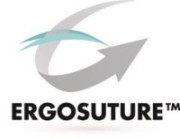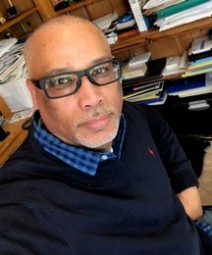
© CEOCFO Magazine -
CEOCFO Magazine, PO Box 340
Palm Harbor, FL 34682-
Phone: 727-
Email: info@ceocfocontact.com


Search





Business Services | Solutions
Medical | Biotech
Cannabis | Hemp
Banking | FinTech | Capital
Government Services
Public Companies
Industrial | Resources
Clean Tech
Global | Canadian
Lynn Fosse, Senior Editor
Steve Alexander, Associate Editor
Bud Wayne, Marketing
& Production Manager
Christy Rivers -




 Print -
Print -
The Drive’N Roll provides users Advanced Suturing Capabilities with the Simplicity of a Regular Needle Driver across all Surgical Platforms
 Claude Nogard
Claude Nogard
Co-
Ergosuture
Contact:
Claude Nogard
1285 Scandia Ter.
Oviedo, FL 32765
Interview conducted by:
Lynn Fosse, Senior Editor
CEOCFO Magazine
Published -
CEOCFO: Mr. Nogard, you have a long history in healthcare; what led to the founding of Ergosuture™?
Mr. Nogard: Ergosuture is a medical device company with an innovative suturing system for closing various patient tissue layers. Our product line will empower surgeons and other trained caregivers to close up patient’s deep-
CEOCFO: What have you developed at Ergosuture that makes the difference?
Mr. Nogard: ErgoSuture’s first product is the Drive’N Roll, an advanced suturing system. The Drive’N Roll was designed by a surgeon for surgeons. Contrary to commercially available needle drivers, including the Endo-
The key thing when you have a static relationship is that the surgeon needs to move the wrist or actuate the wristed arm of the robot to drive the needles through the tissue. That can create some pain, discomfort and some corrective effort for the surgeon, especially when they are working in hard-
Our innovation was to replace these flat tips with rollers. That creates, for the first time, a dynamic relationship between the needle and the needle driver. This allows surgeons to drive the needle in very hard to reach locations, without having to twerk the wrist to drive it through tissues.
CEOCFO: Have rollers been tried in the past or are they used now?
Mr. Nogard: No. I was surprised, and so were surgeons, engineers and others that we reached out to throughout our product development process. Our technology does not take away from the suturing technique but empowers surgeons to do more than they were doing before. It provides users advanced suturing capabilities with the simplicity of a regular needle driver across all surgical platforms, from open surgery to minimally invasive surgery, including laparoscopic and robot-
CEOCFO: What type of training might a surgeon need to use your Drive ‘N Roll?
Mr. Nogard: Training needs are expected to be limited. The device’s design is such that a surgeon can use it as a traditional needle driver if they so choose. This means that if you decide not to actuate the rollers, you can clamp the jaws down on to the needle and use it as a traditional needle driver. They can suture patients the same way they have been suturing them for one hundred years or leverage the Drive’N Roll technology to minimize the cognitive effort associated with laparoscopic suturing.
If they decide to actuate the Drive ‘N Roll rollers, then they will experience better needle handling, allowing them to suture in hard-
In terms of the learning curve, what we have found out from working with surgeons, is not so much about how to handle the device, but how to understand how much they can do beyond what they were already doing before. This device is enhancing and going beyond what they are already doing today.
CEOCFO: Would you give us an example of when a surgeon might use your devices?
Mr. Nogard: Let us assume that a urologist, a general surgeon or a gynecologist is working deep in the pelvis, trying to suture tissues. Suturing entails twisting your wrist, sometimes repeatedly, to drive the needle as needed through the tissue and retrieving it, repeating this sequence multiple times until the suture is complete. In such locations as the pelvis, you have little maneuverability and impaired depth perception because of 2D optics used in laparoscopy. Even more challenging, this time-
CEOCFO: How have you reached out to surgeons, to hospitals? How do you gain attention?
Mr. Nogard: From the onset of our company, we have engaged with surgeons to refine the unmet needs and define our product specifications and final design. On many occasions along our outreach for feedback. surgeons expressed their interest to invest in the company, which was a defining vote of confidence. We are now testing the Drive’N Roll with our surgeons and partners, as we prepare for commercial launch. Later this year, we will reach out to hospitals, to conduct demos and trials and to showcase our product and demonstrate our value proposition.
CEOCFO: What have you learned as people have been trying the Drive ‘N Roll and reviewing it for you?
Mr. Nogard: We knew we were breaking new grounds with the Drive’N Roll by changing the relationship between the needle and the needle driver. Our collaborators showed us very quickly that current needles are not optimal. That was a surprise, but a good surprise. We are now in the process of reinventing these needles as well.
CEOCFO: Where does cost come into play? How does your product compare with what is on the market?
Mr. Nogard: We made a device that is very simple, so in terms of cost of goods, we expect to be about 40% cheaper than our competition. This was achieved by replacing the needle driver flat tips with rollers.
We are eventually looking to adapt the technology to be used with robots and we expect to have the same savings when compared to comparable instruments currently used by robots.
CEOCFO: I know you mentioned surgeons as investors. Are you looking for additional funding now or partnerships?
Mr. Nogard: Yes. Many surgeons have invested at the seed level. We are now preparing for and raising funds towards commercial launch. We are currently raising $7 million in Series A.
CEOCFO: Have surgeons been looking for a better way or is it more that they will be excited when they recognize what you have developed and how it can help?
Mr. Nogard: That is a very good question. I think that the perception in the marketplace is that with the advent of the robots, namely the Da Vinci, the market is somewhat satisfied. At a time of cost containment, there is a room for more cost-
CEOCFO: When you are speaking to a potential investor who may not be a surgeon, do they understand? Is it easy when you are talking to investors to recognize the concept?
Mr. Nogard: It is indeed more difficult. The mainstream investors tend to gravitate towards surgical robots, although adoption of Robots, such as the Da Vinci, will remain relatively slow due to its high capital cost and prevailing cost containment pressures across the healthcare industry.
We are very fortunate to have a tremendous following of surgeons already. They are helping us to demonstrate to investors the value of our innovative technology.
CEOCFO: In the COVID era, is it even harder to attract attention as there are so many products and services and ideas swimming around?
Mr. Nogard: Interestingly, the COVID period has been interesting for companies like ours that has a small footprint. That has eased our interactions with investors and partners. On the other hand, what has become more complex is accessing operating rooms and labs for testing, because of obvious restrictions and protocols. Like many companies in the healthcare field, we have been limited in our ability to execute, because you cannot readily access hospitals, clinics and operating rooms for product testing.
CEOCFO: Why are you sure that, at the end of the day, ErgoSuture will be successful, that it will be recognized and adopted?
Mr. Nogard: Our customers have backed us financially from the beginning, convinced that the Drive’N Roll would make a difference in their surgery practice. They are our customers, and they are the reason we are here. Every time we presented the product to surgeons, not only were they seduced by its simplicity and potential, but they also agreed with its value proposition, to the point that many invested in the company. When your customers agree to invest to develop a product they would like to use, you are doing something right. That is a great feeling. That is what keeps us going, because we have not met too many surgeons that have actually looked at this product and said they do not have a need for it. They realize very quickly, when they see and try the product, that it fulfills an unmet need that has not been addressed thus far. That is the reason we believe that we will succeed where others have failed.
Ergosuture, Claude Nogard, Suturing Device, Surgical Wound Closure Devices, Drive’N Roll, The Drive’N Roll provides users Advanced Suturing Capabilities with the Simplicity of a Regular Needle Driver across all Surgical Platforms, CEO Interviews 2021, Medical Companies, Medical Device Company, MedTech Company, wound closure, enhanced suturing devices, wound closure devices, suturing technology, Laparoscopic suturing, surgical solutions, medical device design company, medical device development companies, drive and roll needle through tissue, , Laparoscopic surgery, sacrocolpopexy, suture consistently, simplify suturing process, Ergosuture Press Releases, News, Twitter, Linkedin
“Provides users advanced suturing capabilities with the simplicity of a regular needle driver across all surgical platforms.”
Claude Nogard